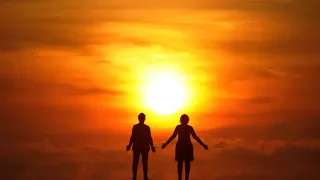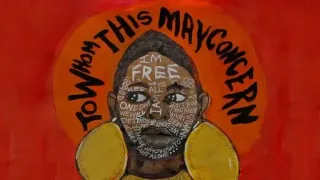April 12, 2015
National Parks Encourage LGBTs to Come Out and Visit
Kilian Melloy READ TIME: 5 MIN.
The National Park Service is encouraging LGBT Americans to come out and visit the more than 400 parks overseen by the federal agency.
The latest move by the park service to engage the LGBT community is part of the new Find Your Park initiative, launched recently in conjunction with the National Park Foundation.
Gay and lesbian park service employees and lesbian singer Mary Lambert, one of several celebrity centennial ambassadors for the initiative, are helping to spread the inclusive invite as part of the new public awareness and education campaign celebrating the milestone centennial anniversary of the National Park Service in 2016.
"Parks can be much more than a place - they can foster a state of mind that inspires me to create some of my best poetry with those I love," stated Lambert, who turned her vocal work on the award-winning pro-gay anthem "Same Love" by Macklemore and Ryan Lewis into her own chart-topping hit "She Keeps Me Warm" in 2013. "And, they are also places that tell my story too. I'm grateful to the National Park Service for their efforts to tell a more inclusive story that commemorates the places and events that honor LGBT history."
In a short video filmed at the Boston National Historical Park for the campaign, Lambert is joined by two fellow spoken word poets who create a piece referencing the city's role in landmark struggles for freedom, from the Boston Tea Party rebellion to the fight for marriage equality.
"Boston is a place rich in history," noted Lambert, adding that parks are "a fabric of your life" and can inspire one to dream. "Whatever it is, there is a park out there for you. So get out there and find your park."
Another video features gay park ranger Michael Liang, a visual information specialist at Santa Monica Mountains National Recreation Area in southern California. He is shown jogging through Cheeseboro Canyon off the 101 where he runs prior to heading to work.
Liang noted that parks allow visitors to "slow down" their minds and "notice" the beauty of the outdoors.
"All you have to do is get up, get out there, and find your park," said Liang.
In a phone interview with the Bay Area Reporter , Liang, 29, explained that the park service is looking to create the next generation of park supporters and advocates with the campaign.
"If you look at who we traditionally attracted, it was upper middle-class families," noted Liang, who grew up in Michigan and started with the park service as an intern in 2004. "The parks are funded by the taxpayers, so it is really important we represent the diversity of the country and the population."
Through the Find Your Park's website, http://www.findyourpark.com/, any visitor can upload their own video talking about their love for America's protected spaces or an individual park site that is of particular interest to them.
"It is a digital platform to share your stories. We invite the public to share their favorite national park stories or how they want to envision what the park service looks like," said Liang. "It is a great way for LGBT people to share why it is important to them or what we can do to make them more relevant to our community."
Responsible for the marketing materials of the park where he works, Liang said he is mindful of using photos that show a diverse array of visitors. He is working on a series of posters aimed at inspiring Los Angeles residents to visit the Santa Monica Mountains west of the city.
"I take personal responsibility to ensure the people depicted in those photos reflect the diversity of L.A., for example, having two men holding hands watching the sunset in the Santa Monica Mountains," said Liang, who came to the park last June from Philadelphia where he worked in the park service's regional office for the Northeast. "I am still discovering our park. By June my challenge is to identify LGBT historical figures with our park. It will be perfect timing to start digging into those stories."
One way the parks can attract LGBT visitors, said Liang, is through the programming sites offer guests. He pointed to the Bay Area's Rosie the Riveter/WWII Home Front National Historical Park on the waterfront in Richmond, which has sought to capture the stories of LGBT people who either worked in the East Bay shipyards during the war or were service members who embarked from Bay Area military bases for combat in the Pacific Rim.
"How we can attract LGBT visitors is through creating national park sites that tell the story of our community," said Liang, who is hopeful that one day there will be an LGBT-specific national park site. "While there currently isn't one yet in the system, there is the theme study looking at LGBT sites."
In January 2014 the B.A.R. broke the news that the park service had teamed with Megan E. Springate, who identifies as queer and is seeking a Ph.D. in archaeology at the University of Maryland, to oversee a National Historic Landmark LGBTQ Theme Study and proposed framework.
As part of the project, the park service is seeking nominations of places important to the country's LGBT community for inclusion on the National Register of Historic Places or to be designated as a National Historic Landmark. Both are considered important first steps that could lead to the properties one day becoming national park sites.
According to park service officials, only five properties in the country have been granted some form of federal historic preservation recognition specifically due to their relationship to LGBT history. There are four sites presently included in the National Register of Historic Places and one - New York City gay bar the Stonewall Inn - listed as a National Historic Landmark. The second landmark, the Chicago home of gay rights pioneer Henry Gerber, should be finalized later this year.
Last month the National Park Service released a seven-page document listing various ways members of the public can assist with its LGBTQ Heritage Initiative. Steps people can take run the gamut from proposing landmark-worthy sites to creating LGBT-themed tours of historic districts.
"The National Park Service has just released a document that brings together the many ways that people across America, regardless of identity, location, or how much time they have, can participate and engage with the initiative," Springate wrote in an email to members of the Rainbow Heritage Network, a group for LGBT history advocates. "These include sharing information about places important to your community, spreading the word, visiting historic places, and writing nominations or nomination amendments for the National Register of Historic Places or National Historic Landmarks programs."
The document can be downloaded online at http://www.nps.gov/history/heritageinitiatives/LGBThistory/GetInvolved.pdf
Springate and Elaine Jackson-Retondo, an historian and the National Historic Landmarks program manager, will be in San Francisco next week to present an overview of the LGBT initiative. The free public forum will take place from 7 to 9 p.m. Monday, April 13 at the GLBT History Museum, located at 4127 18th Street in the Castro






